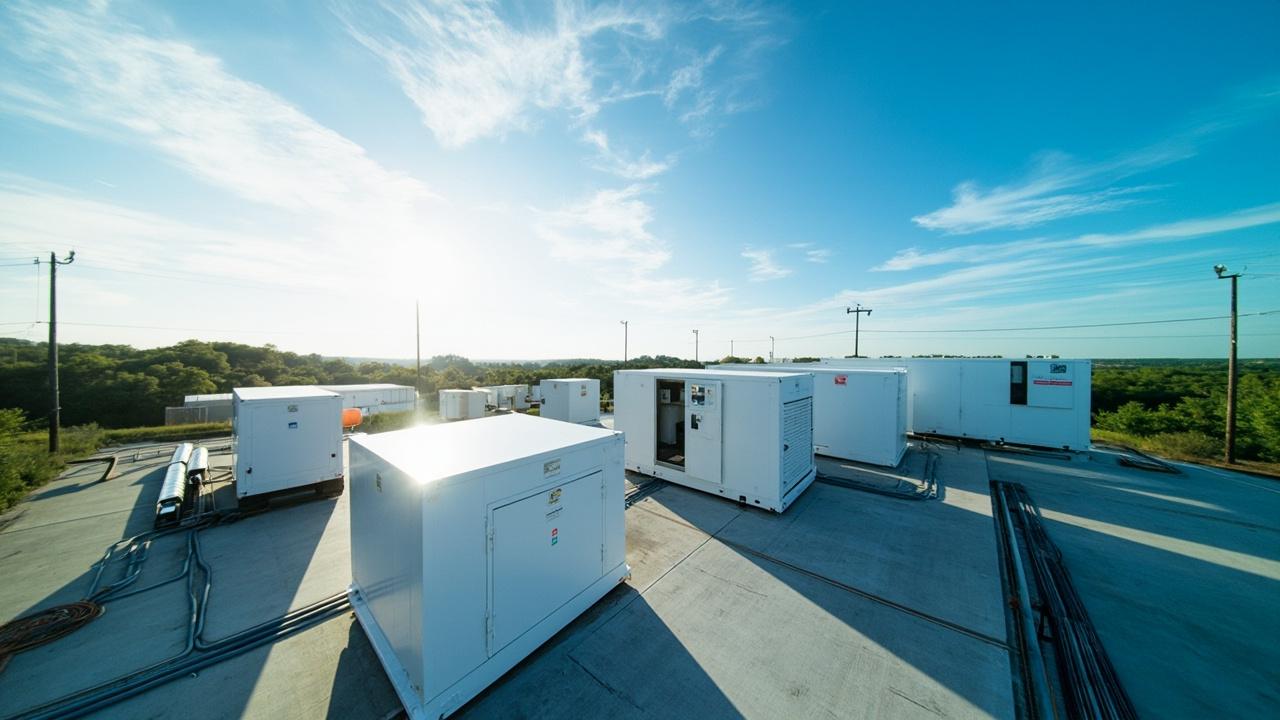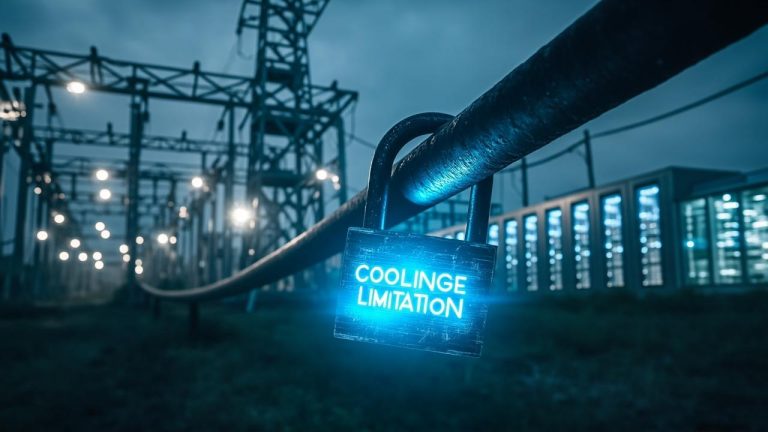Introduction
Generator paralleling offers a robust solution when a single generator falls short. Imagine a hospital plunged into darkness during a storm, its sole generator unable to handle the surge of life-saving equipment. Or a data center, the backbone of countless online services, crippled by a power overload that shuts down its operations. These are the scenarios where the limitations of relying on a single generator become painfully clear.
Generator paralleling, in its simplest form, involves connecting two or more generators to operate together, supplying power to a common load. This seemingly simple concept unlocks a wealth of benefits that transform the landscape of backup power systems. The most prominent advantages include increased power capacity to meet growing demands, improved redundancy and reliability to ensure uninterrupted power supply, enhanced scalability to adapt to changing needs, and optimized efficiency through intelligent load sharing.
This article will serve as a comprehensive guide to understanding the dual nature of generator paralleling, that combines the precision of engineering with practical, real-world considerations. We’ll delve into the core principles that govern successful synchronization, explore various paralleling methods, and examine the essential equipment required for flawless operation. From design considerations to maintenance best practices and troubleshooting techniques, we’ll equip you with the knowledge to master the art and science of reliable power generation.
The Science Behind Synchronization
At the heart of successful generator paralleling lies a critical understanding of alternating current (AC) waveforms. Unlike direct current (DC), AC electricity constantly changes in magnitude and direction, following a sinusoidal pattern.
This pattern is defined by several key characteristics: voltage (the electrical potential difference), frequency (the number of complete cycles per second, measured in Hertz), and phase angle (the position of the waveform relative to a reference point in time). When attempting to connect two or more generators together, these characteristics must be meticulously aligned to prevent potentially disastrous consequences.
Synchronization is not merely a desirable feature; it’s an absolute requirement for safe and reliable operation. Imagine two waves crashing into each other out of sync – the result is turbulent and destructive. Similarly, if two generators are paralleled without proper synchronization, the resulting electrical “collision” can generate immense circulating currents.
These currents surge through the generator windings, potentially causing overheating, insulation breakdown, and even catastrophic mechanical failure due to the immense forces involved. Furthermore, the sudden inrush of current can cause significant voltage dips throughout the entire power system, disrupting sensitive equipment and potentially leading to widespread outages.
To achieve seamless generator paralleling, a specific set of conditions must be met. These are often referred to as the five synchronization conditions: matching voltage, identical frequency, zero phase angle difference, the same waveform shape, and correct phase sequence. Voltage matching ensures that neither generator attempts to “force” current into the other. Frequency synchronization ensures that both generators are operating at the same speed, preventing one from trying to lead or lag the other.
Phase angle alignment is crucial for ensuring that the voltage peaks and troughs of both waveforms occur at the same time. A consistent waveform shape, typically sinusoidal, guarantees compatibility. Finally, the phase sequence (the order in which the phases reach their peak voltage) must be identical to avoid creating a short circuit. Failing to adhere to these conditions when performing generator paralleling can lead to serious equipment damage and system instability.
Methods of Generator Paralleling
There are several established methods for achieving successful generator paralleling. Each approach has its own set of advantages and disadvantages, making it suitable for different applications and budgets. Understanding these methods is crucial for selecting the right paralleling strategy for a specific power system.
One of the earliest methods of generator paralleling is *manual synchronization*. This technique relies on skilled operators to carefully monitor voltage, frequency, and phase angle using instruments like synchroscopes and voltmeters. The operator manually adjusts the incoming generator’s speed and excitation until it matches the running system’s parameters. Once synchronization conditions are met, the operator closes the generator’s breaker, bringing it online.
- Requires skilled operators
- Slower process
- More prone to human error
While relatively inexpensive, manual synchronization is slower and more prone to errors compared to automated methods. It also demands a high level of operator skill and attention.
Automatic synchronization provides a far more sophisticated and reliable approach. Automatic synchronizers employ electronic control systems to automatically match the incoming generator’s voltage, frequency, and phase angle to the running system. These systems typically consist of voltage matching circuits, frequency controllers, and phase angle adjustment mechanisms. Once synchronization is achieved, the synchronizer automatically closes the generator’s breaker.
- Faster and more accurate than manual synchronization
- Reduces reliance on manual intervention
- More complex and expensive
The advantages of automatic synchronization include increased speed, improved accuracy, and reduced reliance on manual intervention, making it ideal for critical applications where seamless transitions are essential. However, this method is also more complex and costly than manual synchronization. Furthermore, when considering automatic synchronization, it is important to think about isochronous load sharing, where generators share the load equally and maintain a consistent frequency regardless of load changes.
Alternatively, droop speed control allows generators to share the load based on their governor settings. This can result in one generator being more loaded than the others. These are key considerations when deciding on the best approach to generator paralleling for a specific application.
Essential Equipment for Successful Generator Paralleling
For successful generator paralleling, a suite of specialized equipment is necessary to ensure safe, reliable, and efficient operation. These components work in concert to synchronize generators, protect them from faults, control load sharing, and monitor system performance. Without these critical elements, paralleling becomes a risky endeavor, potentially leading to equipment damage, power outages, or even safety hazards.
Protective Relays: Guardians of the Generators
Protective relays are essential safety devices in any generator paralleling system. They continuously monitor various electrical parameters and respond to abnormal conditions to protect the generators and the connected load. Reverse power relays are crucial to prevent a generator from motoring, which occurs when it receives power from the grid or another generator. This condition can severely damage the engine and alternator.
Overcurrent relays safeguard against excessive current flow due to short circuits or overloads, tripping the generator breaker to isolate it from the fault. Undervoltage relays protect against voltage sags, which can indicate a problem with the generator or the connected load, preventing damage to sensitive equipment. Properly configured and maintained protective relays are the first line of defense against electrical faults and ensure the longevity of the generator system.
Automatic Synchronizers: Orchestrating Seamless Connections
Automatic synchronizers are the brains behind seamless generator paralleling. These devices continuously monitor the voltage, frequency, and phase angle of the incoming generator relative to the running generator or the grid. When all parameters are within acceptable tolerances, the synchronizer sends a close command to the generator breaker, connecting it to the system. Sophisticated synchronizers incorporate features such as voltage matching, frequency control, and phase angle adjustment to ensure a smooth and bumpless transfer.

Accurate synchronization minimizes circulating currents, reduces mechanical stress on the generators, and prevents voltage dips that can disrupt sensitive equipment. The speed and precision of automatic synchronizers significantly reduce the reliance on manual intervention, improving the overall reliability and efficiency of the generator paralleling process. Using automatic synchronizers within a generator paralleling setup dramatically improves the safety and ease of use of the system.
Control Systems and Metering: Management and Monitoring
Control systems, typically utilizing programmable logic controllers (PLCs) or dedicated generator controllers, are the central nervous system of a generator paralleling system. These controllers manage the entire paralleling process, from start-up and synchronization to load sharing and shutdown.
They monitor various parameters, such as voltage, current, frequency, power factor, and generator temperature, and use this data to make decisions about generator operation. Advanced control systems can also communicate with other devices, such as protective relays and automatic synchronizers, to coordinate system-wide responses to changing conditions.
Accurate metering is crucial for ensuring proper synchronization and load distribution. Voltage, current, frequency, and power factor meters provide real-time feedback on system performance, allowing operators to identify and address any issues that may arise. By closely monitoring these parameters, operators can optimize load sharing, prevent overloads, and ensure that the generators are operating within their safe limits. This ensures that the system can reliably utilize generator paralleling to meet the demands placed upon it.
Load Sharing Strategies
When multiple generators work in parallel, distributing the load efficiently becomes paramount. Load sharing ensures that each generator operates within its optimal range, maximizing fuel efficiency, minimizing wear and tear, and extending overall lifespan. Without proper load sharing, one generator might be overloaded while another is underutilized, leading to potential equipment failure or inefficient operation.
There are several established methods to achieve effective load sharing in generator paralleling systems. Two of the most common are droop speed control and isochronous load sharing. Droop speed control is an automatic method where the generator’s output is adjusted based on frequency deviations. As the load increases, the frequency tends to decrease.
The governor responds by increasing the fuel supply, thereby increasing the generator’s output to compensate. This method is simple to implement and inherently stable, but it can result in slight variations in frequency as the load changes. Isochronous load sharing, on the other hand, maintains a constant frequency regardless of load changes. This method requires a more sophisticated control system that actively adjusts the output of each generator to maintain a consistent frequency and distribute the load proportionally.
Choosing the appropriate load sharing method depends on the specific application and its requirements.
- Droop speed control is often preferred for applications where simplicity and stability are key considerations.
- Isochronous load sharing is favored in scenarios where precise frequency control and equal load distribution are essential, such as in critical power applications like data centers and hospitals.
Ultimately, careful consideration of the system’s needs and capabilities is crucial in selecting the optimal load sharing strategy.
Generator Paralleling Best Practices
System design for generator paralleling demands a holistic approach, taking into account various factors to ensure seamless operation and optimal performance. Proper generator sizing is paramount; selecting generators that can collectively meet the peak load demand while operating efficiently under normal conditions is crucial. Oversizing can lead to under-utilization and reduced efficiency, while undersizing can compromise system reliability. Cable selection is another critical aspect.
Cables must be appropriately sized to handle the maximum current carrying capacity without excessive voltage drop or overheating. Furthermore, a robust grounding system is essential for safety and to minimize the risk of electrical faults. A well-designed grounding system provides a low-impedance path for fault currents, enabling protective devices to quickly isolate the faulted equipment.
Installation Essentials
The installation phase requires meticulous attention to detail. The paralleling switchgear, the heart of the paralleling system, should be installed in a clean, dry, and well-ventilated environment. Proper alignment and secure mounting are essential to prevent vibrations and mechanical stress. Control panels, which house the synchronizers, protective relays, and control logic, should be readily accessible for maintenance and troubleshooting. Cabling should be neatly organized and properly supported to prevent damage and ensure reliable connections.
All connections should be torqued to the manufacturer’s specifications to prevent loosening over time, which can lead to increased resistance and potential overheating. Thorough inspection of all wiring and connections is vital before energizing the system. The correct polarity of all connections must be verified to prevent short circuits or equipment damage. All grounding connections should be checked for proper continuity and low resistance.
Testing and Uptime
Commissioning and testing are crucial steps to verify the proper functionality of the generator paralleling system. A comprehensive commissioning procedure should include functional testing of all components, including the generators, synchronizers, protective relays, and control system. The system should be subjected to simulated load conditions to verify its ability to synchronize and parallel the generators seamlessly.
Load sharing capabilities should be thoroughly tested to ensure that the generators are sharing the load proportionally according to the design specifications. Protective relays should be tested to verify their settings and response times. Finally, regular preventative maintenance is essential to ensure the long-term reliability of the generator paralleling system.
Visual inspections should be conducted regularly to check for any signs of damage, loose connections, or corrosion. Electrical testing, including insulation resistance testing and contact resistance measurements, should be performed to assess the condition of the equipment. Control system calibration should be performed periodically to ensure accurate synchronization and load sharing.
Proper maintenance is key to preventing unexpected failures and ensuring that the paralleling system is always ready to provide backup power when needed. The coordination of these elements ensures effective generator paralleling for sustained reliability.
Troubleshooting Generator Paralleling Systems
Another prevalent problem is load sharing imbalance, where generators in a parallel configuration fail to proportionally share the load. This can lead to overloading of one generator while others remain underutilized, resulting in decreased fuel efficiency and potential damage to the overloaded unit. Load sharing imbalances can arise from issues with the droop settings on the generators, variations in generator impedances, or problems with the control system responsible for load distribution.
Correcting this requires verifying the droop settings are properly configured and matched across all generators. Adjustments to the governor settings and careful inspection of the generator impedances may also be needed to restore balanced load sharing. Understanding the principles behind generator paralleling ensures that a successful balance can be met.
Protective relay trips represent another common headache in paralleling systems. These trips can be triggered by a wide array of faults, including overcurrent, undervoltage, reverse power flow, or ground faults. When a protective relay trips, it’s crucial to investigate the underlying cause rather than simply resetting the relay.

Reverse power relays, for instance, often trip when a generator is motoring, indicating a failure of the prime mover or an issue with the fuel supply. Overcurrent relays trip when a fault condition causes excessive current flow, signaling a potential short circuit or overload. A methodical approach involves examining event logs, analyzing waveforms, and conducting insulation resistance tests to pinpoint the source of the fault and prevent recurrence.
| Problem | Possible Causes | Troubleshooting Steps |
|---|---|---|
| Synchronization Failure | Faulty synchronizer, Voltage regulator issues, Governor problems | Check synchronizer settings, Calibrate voltage regulator, Adjust speed governor |
| Load Sharing Imbalance | Incorrect droop settings, Impedance variations, Control system faults | Verify droop settings, Inspect generator impedances, Check control system |
| Protective Relay Trips | Overcurrent, Undervoltage, Reverse power, Ground faults | Analyze event logs, Examine waveforms, Conduct insulation tests |
The Future of Generator Paralleling
The landscape of generator paralleling is rapidly evolving, driven by technological advancements and the increasing demand for resilient and sustainable power solutions. Digital control systems are becoming increasingly prevalent, offering enhanced precision, automation, and data analytics capabilities.
These systems leverage sophisticated algorithms to optimize synchronization, load sharing, and system monitoring, minimizing downtime and maximizing efficiency. Advanced metering technologies, such as smart meters and power quality analyzers, provide real-time insights into system performance, enabling proactive maintenance and preventing potential issues before they escalate.
One of the most exciting trends is the integration of generator paralleling with renewable energy sources. As solar and wind power become more widespread, paralleling systems are playing a crucial role in ensuring grid stability and reliability. Generators can seamlessly supplement renewable energy generation during periods of low sunlight or wind, providing a continuous and dependable power supply.
Furthermore, energy storage systems, such as batteries, are being incorporated into paralleling schemes to further enhance grid resilience and reduce reliance on fossil fuels. These hybrid systems offer a pathway to a cleaner and more sustainable energy future.
Smart grid technologies are also having a profound impact on generator paralleling strategies. Smart grids enable bidirectional communication between generators and the grid operator, allowing for dynamic load management and optimized resource allocation. This enhances grid stability, reduces transmission losses, and facilitates the integration of distributed generation sources.
The future of generator paralleling lies in its ability to seamlessly integrate with these emerging technologies, creating a more resilient, efficient, and sustainable power infrastructure. Innovations in generator paralleling continue to be developed alongside microgrid growth.
| Trend | Description | Benefits |
|---|---|---|
| Digital Control Systems | Advanced algorithms for synchronization, load sharing, and monitoring. | Improved precision, automation, reduced downtime, maximized efficiency. |
| Renewable Energy Integration | Paralleling generators with solar, wind, and battery storage. | Enhanced grid stability, reduced reliance on fossil fuels, cleaner energy. |
| Smart Grid Technologies | Bidirectional communication for dynamic load management and resource allocation. | Enhanced grid stability, reduced transmission losses, integration of distributed generation. |
Conclusion
In conclusion, the journey through generator paralleling reveals a landscape where meticulous science and practical art converge to create resilient and efficient power systems. From understanding the critical nuances of AC waveforms and synchronization to implementing robust load-sharing strategies and protective measures, every aspect plays a vital role in ensuring seamless operation.
By carefully considering system design, adhering to best practices during installation and commissioning, and proactively addressing potential issues through preventative maintenance and diligent troubleshooting, the promise of reliable power becomes a tangible reality.
The benefits of embracing generator paralleling extend far beyond simply increasing power capacity. The redundancy it offers is invaluable, providing peace of mind in critical applications where uninterrupted power is paramount. The scalability it enables allows systems to grow and adapt to evolving needs, and the improved efficiency through optimized load sharing contributes to cost savings and reduced environmental impact.
From manual synchronization techniques that require skilled operators to the advanced capabilities of automatic synchronizers and sophisticated control systems, the options are diverse, allowing for tailored solutions to meet specific requirements. The proper selection of equipment, including protective relays and accurate metering devices, further safeguards the system against faults and ensures optimal performance. The concept of generator paralleling represents a comprehensive approach to power management, blending theoretical knowledge with hands-on expertise.
Ultimately, mastering the art and science of flawless generator paralleling empowers us to build more resilient, efficient, and sustainable power systems. While this exploration provides a solid foundation, remember that successful implementation requires specialized knowledge and experience.
When embarking on such projects, it is highly recommended to consult with qualified electrical engineers and power systems specialists. Their expertise will ensure that your paralleling system is not only designed and installed correctly but also optimized for your specific needs, guaranteeing a future of reliable and uninterrupted power.
Frequently Asked Questions
What are the main benefits of paralleling generators?
Paralleling generators offers several advantages, primarily increased reliability. If one generator fails, the others can continue to supply power, preventing a complete outage.
Furthermore, paralleling allows for flexible scaling of power output to meet varying demands, improving efficiency by running generators closer to their optimal load points. This configuration also facilitates easier maintenance, as generators can be taken offline for servicing without interrupting the power supply.
What are the key requirements for paralleling generators successfully?
Successful paralleling of generators hinges on a few critical requirements. First and foremost, the generators must have nearly identical voltage levels to prevent circulating currents. They must also have the same frequency, or the system will be unstable.
Furthermore, their phase sequence must be the same, meaning the order in which the phases reach their peak voltage must match. Finally, the generators must have compatible voltage waveforms to avoid harmonic distortion.
What are the different methods used for synchronizing generators for paralleling?
Several methods are available for synchronizing generators before paralleling. One common method involves using synchroscopes or synchronizing meters to visually confirm that the frequency, voltage, and phase angle are closely matched.
Automated synchronizers are also used, which automatically adjust the generator’s speed and voltage to match the grid or another generator before closing the breaker. Another basic technique is a three dark/three bright lamp method.
What is the significance of frequency and voltage matching when paralleling generators?
Matching frequency and voltage is paramount when paralleling generators. A significant difference in voltage will cause a substantial circulating current to flow between the generators, potentially damaging the equipment. Similarly, a difference in frequency will create reactive power surges and instability within the system, hindering the generators’ ability to share the load effectively and possibly tripping the protection devices.
How does load sharing work in a paralleled generator system?
In a paralleled generator system, load sharing is achieved through governor control. Governors regulate the speed of each generator’s engine, and adjusting their settings allows for controlling the power output of each generator.
Generators with higher governor settings will assume a larger share of the load. Automatic load sharing systems are also used, which automatically adjust the governor settings to ensure equal or proportional load distribution based on generator capacity.




